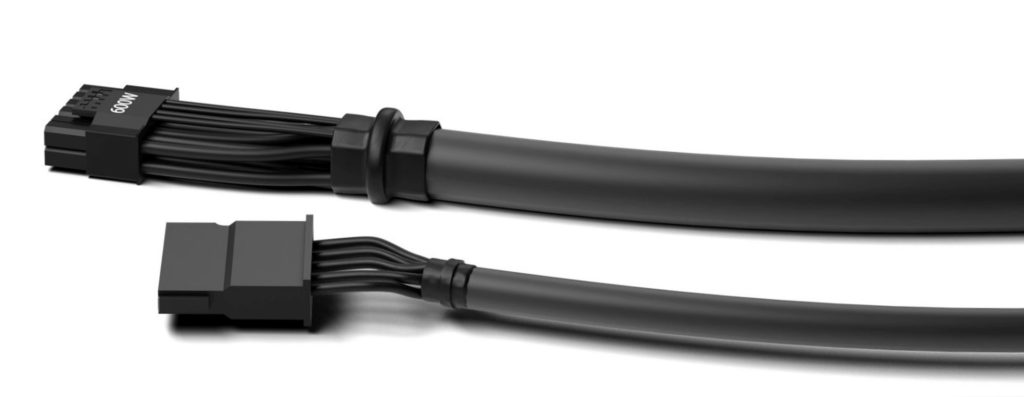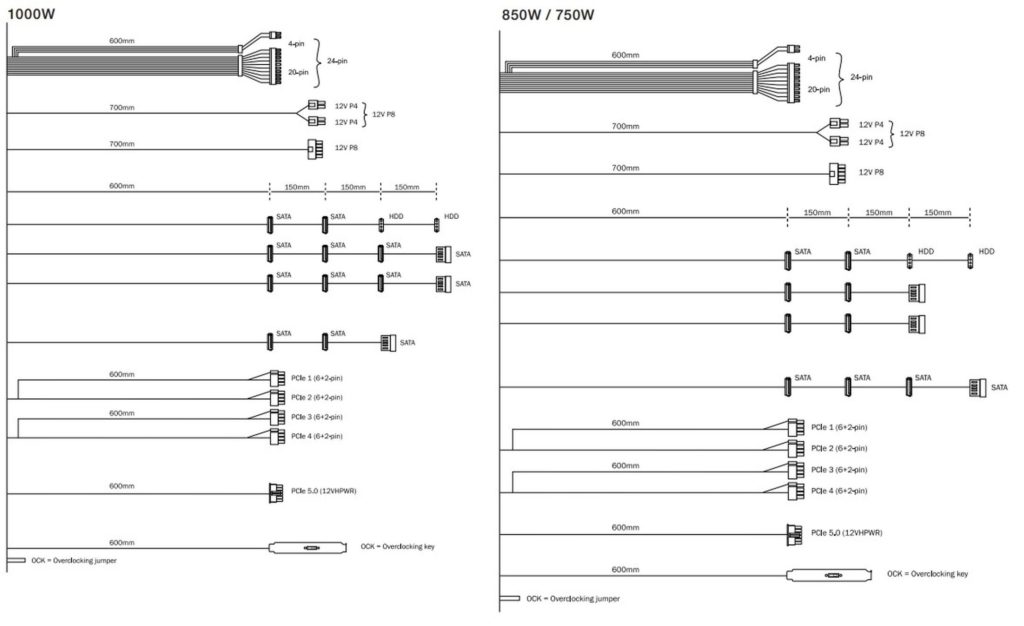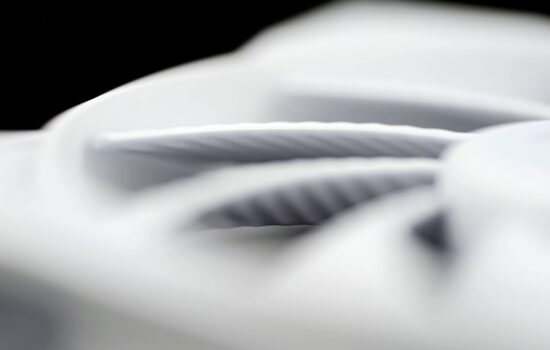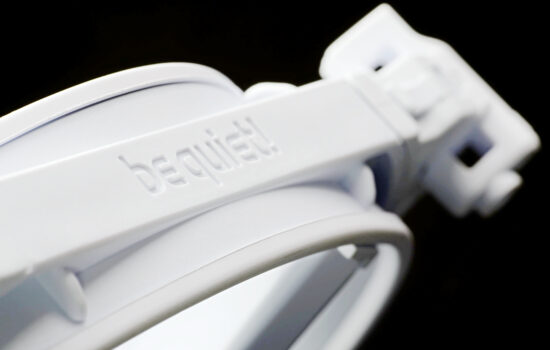BeQuiet! Dark Power 13 (750–1000 W)
The year 2023 in hardware will also be characterized by the advent of power supplies with support for the ATX 3.0 standard. BeQuiet! currently introduced its irons in the fire. Due to more stringent quality criteria, the German company has launched the high-end Dark Power 13 models in three variants, with rated wattages of 750, 850 and 1000 W. All of them have the 80 Plus Titanium efficiency certification.
BeQuiet! has followed up the Dark Power series of power supplies with new models. The numbering has changed not only in the designation of the model series (to 13), but also in their standard. These are the first BeQuiet! PSUs with ATX 3.0 support. We have discussed in detail what criteria all ATX 3.0 power supplies must meet in this article. There are a lot of details, from higher efficiency (compared to ATX 2.x) , to handling higher current peaks, Connected/Modern Standby and naturally to native 16-pin (12VHPWR) PCIe connector support.
With BeQuiet! Dark Power 13, GeForce RTX 4000 and newer graphics cards will no longer need adapters, which will probably phase out similar to how “molex” to 6-pin PCIe adapters once did. However, these BeQuiet! PSUs still allow the connection of traditional 6+2-pin connectors, and in the full number (four) for all performance variants. This means that the power supplies are also fully compatible with Radeons that do not use the 12VHPWR connector for power supply.
On the 16-pin PCIe, it is worth adding that this is a design that is capable of powering 600 W. This is, after all, one of the requirements for ATX 3.0 specifications for power supplies above 450 W. That is, for models with a strong enough 12-volt branch to power very powerful graphics cards.
The Dark Power 13 power supplies should be slightly more efficient across the load spectrum than their predecessors (Dark Rock 12), which also carry the 80 Plus Titanium rating. The most noticeable difference should be at low loads. Exactly how much is not revealed by the specifications, as the older power supplies are quoted to be efficient from “up to” 20 % load. The improvement at power draw in the order of tens of watts will be somewhere between 2–3%. Higher efficiency is also promised for maximum load, where it’s admittedly only up to 1% (with 94% for the Dark Power 13), but assuming you’re permanently cranking the power supply to the max, that will show up more on the operating costs than a significant increase in efficiency at low power draw. At the most efficient end of the spectrum, around 50 %, the efficiency rating is 95.2–95.8 %, depending on the performance variant.
An overview of the available connectors with wiring lengths can be found in the image below. The 1000-watt variant has one SATA connector to spare compared to the 850 and 750 watts, otherwise everything seems to be the same. At least in terms of connectivity options, the cable design may possibly differ in cross-section, but even that is likely to be the same. We will verify this information and add later to this report at least what cross section the 12VHPWR connector wires have.
BeQuiet! retained the option for Dark Rock power supplies to choose (with a two-position switch or, alternatively, a jumper) between splitting the 12-volt branch into four (default setting, multi-rail) or going in single-rail mode, which is particularly attractive for overclocking as it removes the limitation of power supply typically for CPU power delivery. But in practice, outside of extreme OC, multi-rail is a better option from an electromagnetic compatibility (EMC) point of view. This is because a significant change in the load of one device (e.g. a graphics card) does not so significantly affect the supply voltage of another device that is connected to a second 12 V branch, such as a processor.
The fan used is in 135 mm format. It never shuts down, even at the lowest load, but up to half load the operation should be very quiet. The difference between 20 and 50% is only 0.5 dBA. According to the charts from BeQuiet! there is a more aggressive noise development from 70 percent load upwards.
The suggested retail prices for Dark Power 13 power supplies are 215 EUR (BN333/750 W), 250 EUR (BN334/850 W) and 295 EUR (BN335/1000 W). The first units are expected to be available in stores from 24 January.
English translation and edit by Jozef Dudáš















